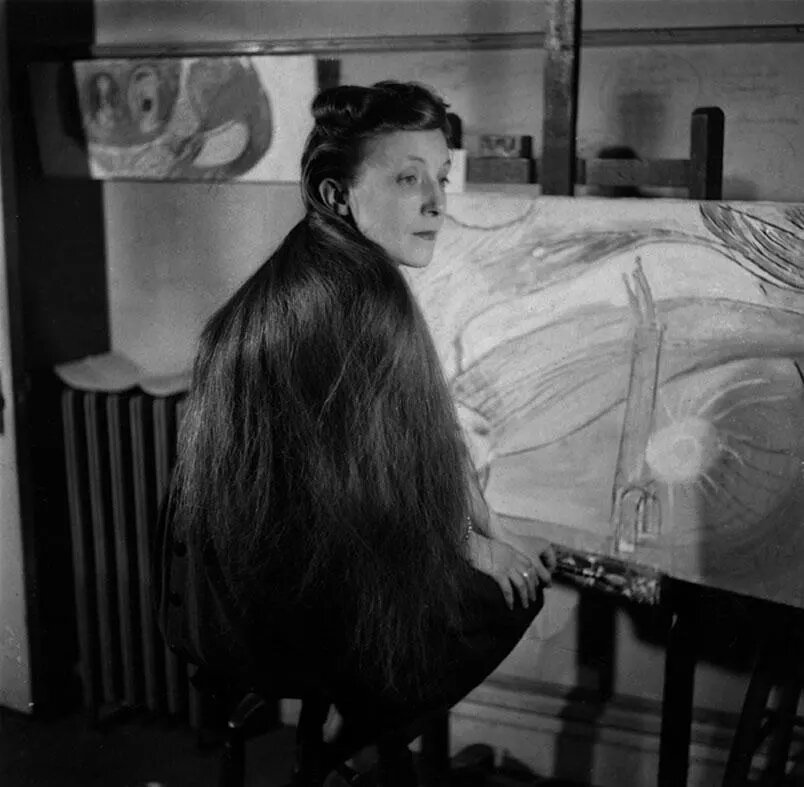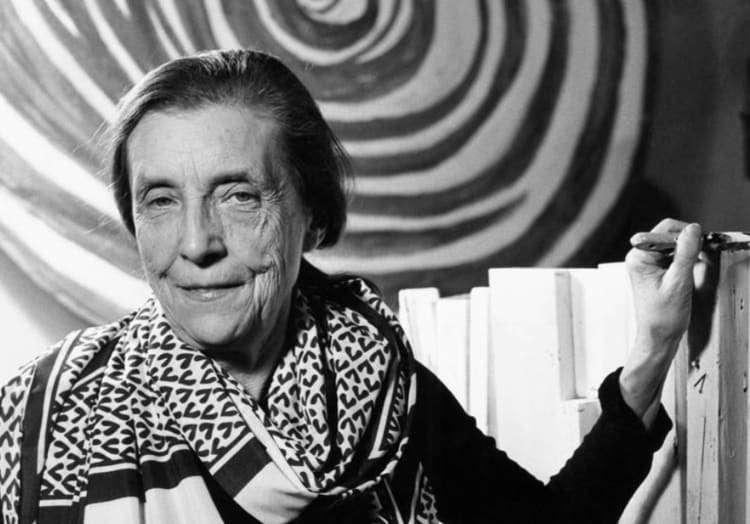Painter, sculptor and visual artist, Louise Bourgeois (1911-2010) has undoubtedly marked the art of the 20th century. Let's discover 8 things to know about this monument of contemporary art.

1 - She was born into a family of antique tapestry restorers
Born in Paris on December 25, 1911, Louise Bourgeois became familiar with the practice of art at an early age when she helped her parents in their tapestry workshop.
After obtaining her baccalaureate, she studied mathematics at the Sorbonne in Paris before enrolling at the École des Beaux-Arts in Paris in 1933.
In the 1930s, she frequented Parisian studios and salons, meeting Fernand Léger and André Lhote. In 1936, she continued her artistic training at the École du Louvre.
2 - She married an art historian
In 1938, Louise Bourgeois married the American art historian Robert Goldwater and moved with him to the United States, specifically to New York.

Louise Bourgeois in her New York studio in 1946
After several attempts to join the closed circle of Parisian surrealists, Louise Bourgeois made connections with important figures in the art world: Joan Miró, Yves Tanguy, Marcel Duchamp, Le Corbusier and Ruthven Todd.
3 - Her career as an artist began to take off in New York in the 1940s
Initially, she produced works quite different from what was done after the Second World War. Her artistic creations evoked various subjects such as the body, sex, childhood, fears and the memory of a puritanical America.

Woman-House Series, Louise Bourgeois, 1945-1947
For much of her life, Louise Bourgeois evolved on the fringe of the international art scene, and she had very few exhibitions before the 1970s.
4 - Her art was intimate
Louise Bourgeois's artistic creations focus on her emotions, her anxiety and her painful childhood memories.

Louise Bourgeois with the work To fall on deaf ears in 1991
These elements were therefore essential for the realization of her works of art. Louise Bourgeois even said "Art is a guarantee of mental health.".
5 - Her iconic spiders pay tribute to the mother figure
Louise Bourgeois's famous spider that spreads its huge legs in front of the world's greatest museums is called Maman.

Louise Bourgeois's Maman (1999) in front of the Guggenheim Museum in Bilbao, Spain
Versions of this sculpture can be seen in front of the Guggenheim Museum in Bilbao, the Mori Art Museum in Tokyo, the Hermitage Museum in St. Petersburg, the Tate Modern in London, the Kunsthalle in Hamburg and the National Gallery of Canada in Ottawa.
With this work, which has become emblematic, Louise Bourgeois pays tribute to her mother, whom she lost at a very young age, when she was only 18. She saw the spider as a beneficial, protective and intelligent creature. She managed to give a positive image to an insect that usually frightens and has a rather negative connotation.
6 - Louise Bourgeois sought to desacralize the figure of the father
In contrast to the love she felt for her mother, Louise Bourgeois totally rejected her father, known to be a womanizer.
"Since I was demolished by my father, why shouldn't I demolish him?"

Destruction of the Father, Louise Bourgeois, 1974
With Destruction of the Father, she annihilated the figure of the father in this dark cellar covered with phalluses and udders, in what could look like a cannibal feast.
7 - An icon of feminism despite herself
In the 1970s, Louise Bourgeois officially supported young women artists and even participated in militant exhibitions organized for members of the MLF (Women's Liberation Movement).

Woman House, Louise Bourgeois, 1994
Today, Louise Bourgeois is regularly associated with all kinds of feminist movements, often in spite of herself, she inspires many new generations of feminist artists for better or worse.
However, during her lifetime, the artist never claimed to belong to the feminist movement, even finding the cause unfounded: "I am a woman, so I do not need to be a feminist...".
8 - MoMA organized a retrospective of her work in the 1980s
In 1982, Louise Bourgeois was honored at the Museum of Modern Art.
Louise Bourgeois died on May 31, 2010 in New York, she was 98 years old. Since her death, her popularity has continued to grow and her works regularly break records at public sales.




